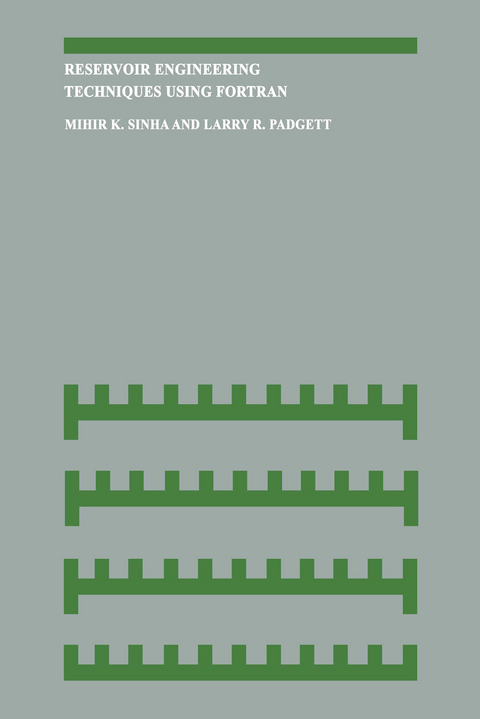
Reservoir Engineering Techniques Using Fortran
Kluwer Academic Publishers (Verlag)
978-90-277-1921-8 (ISBN)
- Titel z.Zt. nicht lieferbar
- Versandkostenfrei innerhalb Deutschlands
- Auch auf Rechnung
- Verfügbarkeit in der Filiale vor Ort prüfen
- Artikel merken
I Reservoir Fluid Properties, Hydrocarbons in Place, and Reserves.- 1 Physical Properties of Reservoir Hydrocarbon Fluids.- 2 Relationship Between Permeability Ration (kg/ko) and Total Liquid Saturation (Sl) for a Reservoir.- 3 Conventional Well Log Analysis.- 4 Oil in Place and Recoverable Reserve by the Volumetric Method.- 5 Estimation of Initial Oil in Place by the Material Balance Method for a Solution Gas Drive Reservoir.- 6 Determination of Original Oil in Place by the Material Balance Method for a Reservoir with Initial Gas Cap and No Water Influx.- 7 Determination of Oil in Place by the Material Balance Method for Reservoirs with Partial Water Drive (No Gas Cap).- II Future Reservoir Performance (Oil).- 8 Performance Prediction by Production Decline Analysis.- 9 Prediction of Performance and Ultimate Oil Recovery of a Combination Solution Gas/Gas-Cap Drive Reservoir.- 10 Prediction of Performance of a Reservoir with Partial Edge-Water Drive.- 11 Dispersed Gas Injection Performance.- III Enhanced Oil Recovery and Performance by Empirical Methods.- 12 In Situ Combustion Performance Using the Oil-Displaced/Volume-Burned Method.- 13 In Situ Combustion Performance Using Empirical Correlations.- 14 Carbon Dioxide Flood Performance.- 15 Polymer Flood Performance.- IV Reservoir Engineering for Natural Gas.- 16 Physical Properties of Natural Gas.- 17 Determination of Gas in Place by the Material Balance Method for a Water Drive Reservoir.- 18 Determination of Original Gas in Place for an Abnormally Pressured Reservoir.- 19 Static/Flowing Bottomhole Pressure for a Gas Well.- 20 Stabilized Absolute Open Flow Potential of a Gas Well.- 21 Conversion of Point-after-Point Gas Well Test Results to Equivalent Isochronal Test Results.- 22 Gas Well Deliverability.
| Zusatzinfo | 223 p. |
|---|---|
| Verlagsort | Dordrecht |
| Sprache | englisch |
| Themenwelt | Naturwissenschaften ► Geowissenschaften ► Geologie |
| Technik ► Elektrotechnik / Energietechnik | |
| ISBN-10 | 90-277-1921-7 / 9027719217 |
| ISBN-13 | 978-90-277-1921-8 / 9789027719218 |
| Zustand | Neuware |
| Haben Sie eine Frage zum Produkt? |
aus dem Bereich


